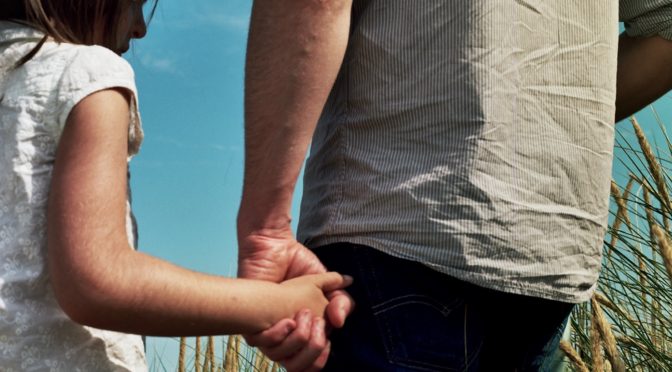 The English title of Amelie van Elmbt’s film exploring the complexities of fatherhood is expertly entwined with the story placed in the centre of the film’s narrative. The children’s tale the film is named after teaches that two very different people can not only love one another other but can also help each other overcome their fears.
The English title of Amelie van Elmbt’s film exploring the complexities of fatherhood is expertly entwined with the story placed in the centre of the film’s narrative. The children’s tale the film is named after teaches that two very different people can not only love one another other but can also help each other overcome their fears.
Set across two days in Belgium, Antoine (Thomas Blanchard), architect Camille (Judith Chemla) and five-year-old Elsa’s (Lina Doillon) lives are disrupted when Antoine appears unexpectedly at Camille’s door. Stuck in a difficult position, placed between career and single motherhood, Camille leaves Antoine, the hitherto absent father, to look after her daughter as she rushes to the airport.
The film transcends the domesticity of typical family drama films, and provides a sensitive exploration into non-normative father/daughter relationships. The film evokes a strong sense of pure childish fascination, with van Elmbt’s own young daughter, Lina Doillon, portraying the central role.
Doillon is a real stand-out element of the film. Her performance is sensitive and pure; often amusing and occasionally irritating – an authentic portrayal of the reality of life with a five-year-old child. It is hard to imagine that a lot of this film was scripted; it feels as though improvised scenes between child and adult are what give this film its warmth. During one particularly moving scene, Elsa asks Antoine if his own father is dead. When he tells her that he is, she accepts this with the authentic and pure response of, “That is sad”. The ease with which she initiates and then navigates the conversation would make most adults envious.
There is a multitude of adult difficulties which threaten to interrupt Elsa’s innocence, such as her parent’s damaged relationship, or her grandmother’s residency in a home. These darker narrative points are never fully embraced. Instead, the film opts to explore childhood experiences and emotions. While this does run the risk of becoming clichéd, the film finds a balance between showing us the transformative power of parent/child relationships and emphasising that they are not without fault.
Although it could be frustrating that the narrative never fully explores the details of the past, that is not what the film is about. Mirroring the fable Antoine reads to Elsa on her request, the film is about acceptance: for someone else and for yourself. Antoine represents the Elephant, who eventually leaves his small and confining space, while Elsa is the butterfly whose unexpected support helps him overcome any trepidations.
Ultimately the film finds its best successes when exploring childhood emotion. In Elsa and Antoine’s relationship the film awakens nostalgia for a childlike freedom of expression. Antoine’s initial difficulty in expressing himself, well noted in the use of silence in earlier scenes, is broken down when he can again experience the unadulterated joys of childhood, such as riding a bicycle down a beach promenade.
THE ELEPHANT AND THE BUTTERFLY screens again at Glasgow Film Festival on February 26th.

